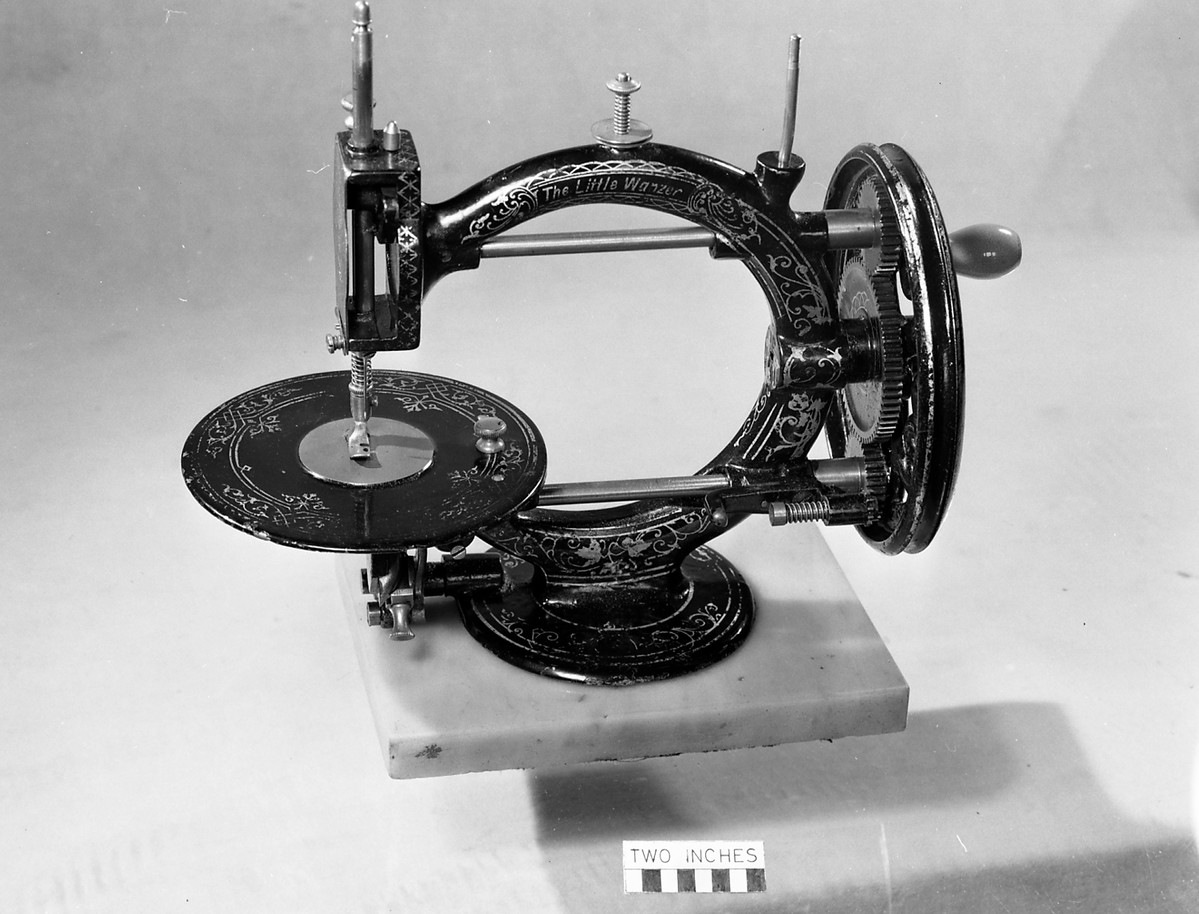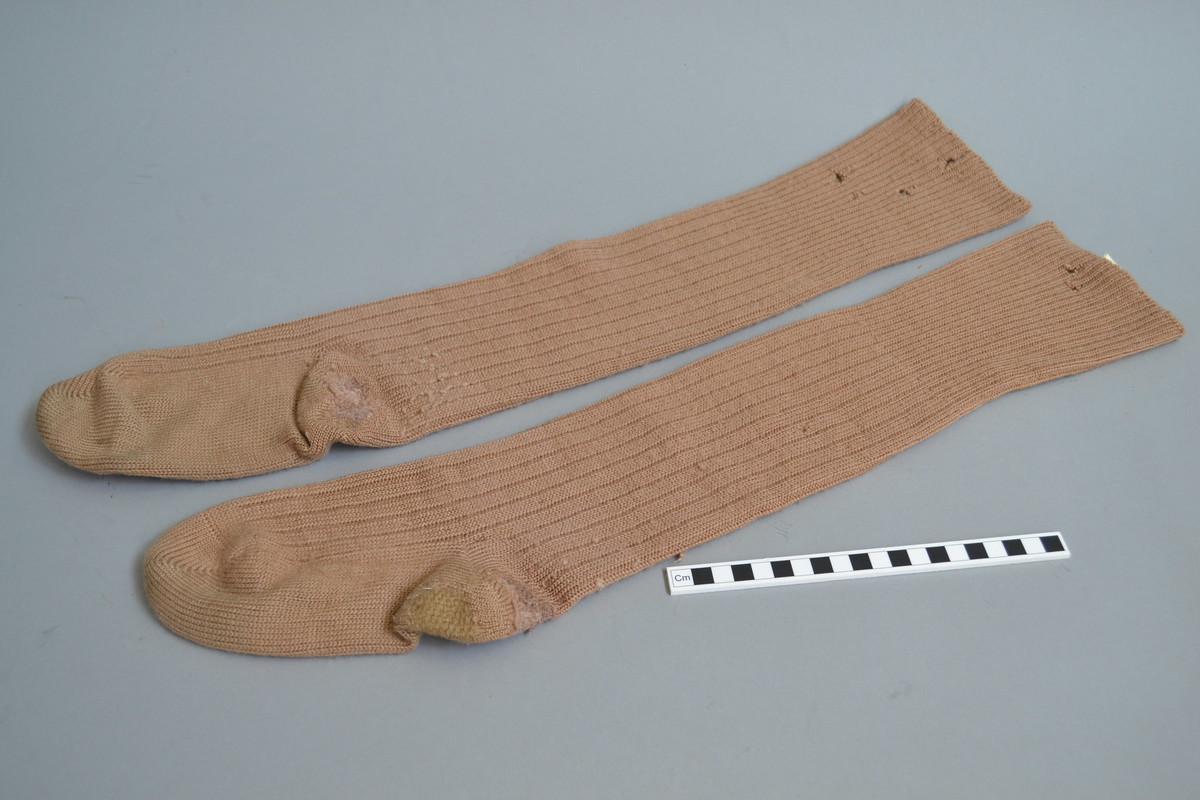Why do we give each other socks at Christmas? And other important questions

Written by Nicola Minney.
Socks have long been a staple of Christmas gift giving. Where there’s a Christmas tree, there’s a great pair of socks waiting patiently beneath. Luckily, The MERL collection is filled with socks, which – thankfully – are all still paired.
In time for the festive season, join us to celebrate this unsung yuletide hero, the mighty sock, and acquire knowledge that you can use to knock your family’s socks off as they unwrap their socks this Christmas.
‘Just what I wanted!’
Socks at Christmas are undoubtedly inspired by good old St. Nick, otherwise at St. Nicholas of Myra (270-343AD). He was an early Christian bishop of Greek descent from Myra at the time of the Roman Empire. His life was filled with generosity and bewonderment. He performed so many miracles, he was awarded the frankly awesome nickname of ‘Nicholas the Wonderworker’. And his most notable act of charity continues to inspire our most famous Christmas tradition even today.
The story goes that a devoted man, a father of three girls, faced destitution after losing his wealth. He was unable to provide a dowry for his daughters, and faced ruin, unable to accept asking for help or charity. Which is where St. Nick waltzes in. Under cover of darkness – like any good hero – though probably not in costume – St. Nick appeared with a plan (and a fantastic shot) to spare the man the embarrassment he worried about. The girls were retiring to bed, and had hung their socks over the fire. St. Nick – in a totally normal gesture – chucked three bags of gold through the open window (other sources mention a chimney), managing to land a bag of coins in each. Come morning, the girls were amazed to find their socks filled with cash (like a more wholesome version of No Country for Old Men), and their father’s dowry drama, resolved.
Whilst the image of wonderworking St. Nicholas has dramatically changed to the more commercially recognisable Father Christmas or Santa, the tradition of Christmas stockings has endured. At Christmastime, in most European countries, children would traditionally hang an everyday sock over the fire. By the Victorian era, Christmas stockings were becoming much more elaborate. Rather than gold, children would hope for sweets, toys, and other goodies from Father Christmas. Some people claim that parents are responsible for these gifts, but The MERL knows otherwise. We asked Santa and he confirmed it. We also regularly speak to him via Twitter DMs, and send Christmas cards to the reindeers, who are all absolute units in their own marvellous right.
Socks: an ancient history
Socks have been around for thousands of years, fulfilling both fashion and function, with different trends and styles including this incredibly old pair from Egypt which were supposed to be worn with sandals. Sadly, this trend has been revitalised with many inconsiderate holiday-makers donning thick white socks and sandals with no regard for others trying to enjoy their time away. These socks were created through a technique called naalbinding, which evolved into a form of hand-knitting that we recognise even today.
Fit for a queen?
By the 16th century, sock making had become a fine art. The aristocracy included elaborate socks in their wardrobe, and Queen Elizabeth I herself was the proud owner of a knitted silk pair. In 1574, the Queen passed the ‘Statues of Apparel’, which aimed to regulate the types of clothing worn by different classes in society, and restrict access to certain colours and fabrics on the basis of class and wealth. There have been multiple suggestions as to why these laws were passed, whether it was as an attempt to get the country buying British rather than importing from abroad, to curb wasteful spending on expensive clothes, and – of course – to maintain social order. Not only must socks be paired together, but equally they must matched with social rank. Almost a decade earlier, ‘sock police’ would stand guard at the edge of the City of London and check people were wearing the right socks for their occupation and status. Anyone in contravention of this legal dress code would be fined. For the sole crime of looking a little jazzier.

While most of the population in the 16th century made their own socks, socks were also a major commodity. So popular had they become that in 1589, a man named William Lee designed a knitting machine, which would produce socks on a scale never seen before. It was said he built this machine so that his girlfriend would spend less time knitting socks and more time with him. Maybe she just wasn’t that into you, William?
William’s sock-based ambitions soon scaled, though his fortunes didn’t. He sent a pair of socks to Queen Elizabeth I in the hopes of securing a patent for his new machine. She refused the first time, as she found the socks to be coarse. The second time, he may have had more success on the quality of the sock, but the Queen still refused the patent, as she feared that his machine would put her people out of work.
However, after rummaging through the drawers of fate for a couple of years, Lee eventually found a sock that matched. He brought his machine to France, where King Henry IV granted a patent almost instantly. The machine design has changed very little since its invention 431 years ago.

Sock knitting remained the same for centuries. Most people would knit their own socks, which would be made of cotton or wool, and darning (fixing holes) was a necessary skill for all sock wearers.
Socks at war
The biggest sock revolution came in 1938, with the introduction of Nylon in clothing manufacture. Nylon allowed for more flexibility, durability, assorted sizes of sock and a much cheaper production. Throughout the 1930s, Nylon was marketed as almost indestructible and suited the changing fashions of women, despite being double the price of silk, the original fabric for hosiery. During the 1940s, nylon was being manufactured for parachutes and tents for the allied forces during World War Two.

This is a pair of Women’s Land Army (WLA) standard issue socks. They belonged to Gwendoline Hayes, who enrolled in the WLA. on the 13th November 1941 and left in March 1946. Before joining the WLA, she worked in the Reading branch of London Drapery Stores. After enrolling, she undertook market gardening training at Seale Hayne College near Newton Abbott, Devon. She subsequently worked at Winter Hill House in Cookham Dean, near Maidenhead, where she stayed until 1944, leaving after the owner of the house died
The woolen socks feature evidence of darning repairs, which were undertaken by Gwen herself. She and her fellow Land Girls were responsible for the upkeep and maintenance of their own clothing. She thought it likely that she would have put in a request for the requisite materials and would have had to collect them centrally before undertaking the repairs. She noted that the socks were indeed very itchy, especially in the summer months. They were worn year-round, both when out working and at dress occasions. The socks form part of a larger donation to MERL from Gwen Hayes, which also includes a pair of WLA breeches, a WLA woolen jumper, a pair of shoes, an overcoat, dungarees and two agricultural cups.
You can learn more about the Women’s Land Army in our WLA online exhibition from earlier in 2020.
When angels washed their socks by night
From all of us at The MERL, we would like to wish you a very Merry Christmas and Happy New Year, filled with socks that we anticipate will be far more intricate (and probably less itchy) than many of the specimens featured here. The one positive is that at least in history no one designed socks with the names of the week on, or Minions, but who are we to say what is or isn’t a good (or despicable) sock.
This will be our last blog for the year, so thanks for reading our posts this year. We really appreciate it. If you’re not up to date, we’d really encourage you to go back and read through our earlier posts from the year. There are some real gems, and all extremely rural.
4 thoughts on “Why do we give each other socks at Christmas? And other important questions”
Leave a Reply
You must be logged in to post a comment.

This was great to read, thanks for sharing! Merry Christmas to everyone at the MERL!
Great article! informative and entertaining. Happy Sockmas to you all!